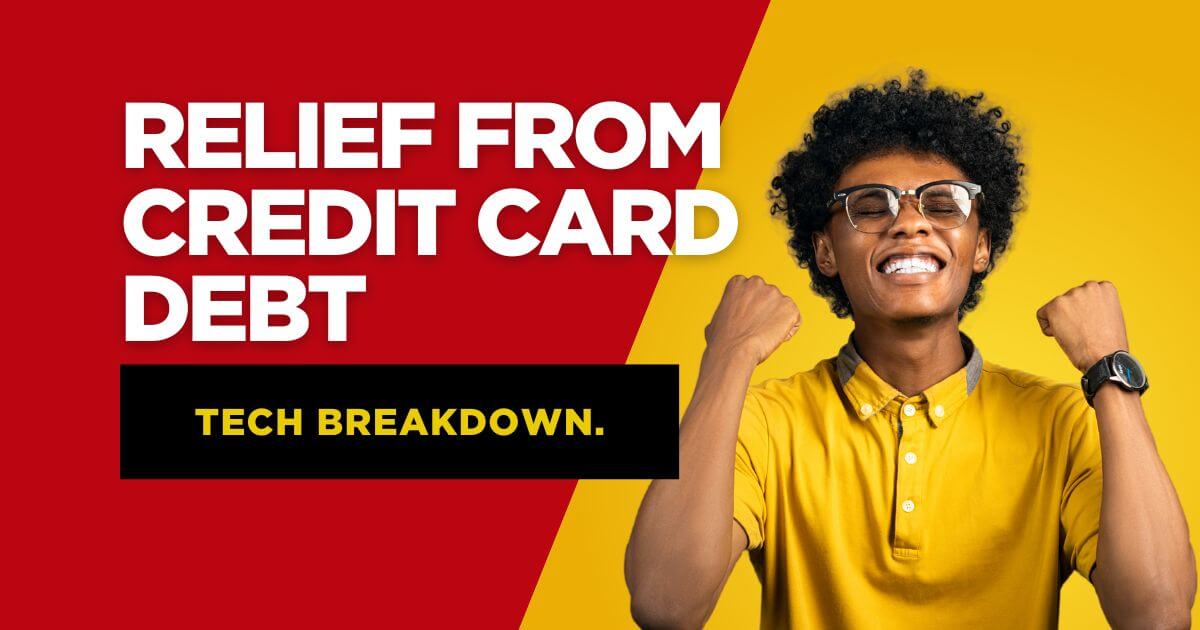
While navigating credit card debt can be frightening, there are simple and quick strategies to make your financial condition better. Whether your objectives are debt pay-off, debt elimination, or quick debt escape, this article will lead you through tried strategies of debt reduction.
Let’s review all the components of reducing credit card debt and provide reasonable steps to provide immediate financial peace.
Knowing Credit Card Balance
Spending more than you can afford results in credit card debt typically compounded with high interest rates between 15 and 25%. Late payments, minimum payment traps, and unexpected costs all help to balance the accounts.
The good news is that there are answers fit for any situation from do-it-yourself projects to professional advice.
Techniques for Credit Card Debt Elimination
These are the best strategies for pay-off and debt reduction.
1. Create a budget then give debt payback first importance.
Knowing your money will enable you to start down the path to debt reduction. Track your expenditure and income to find where you may cut costs. Save extra for your credit card bills.
Half for needs, half for wants; then, save 20% for debt payback using the 50/30/20 method.
2. Debt Management Snowball Approach
First, paying down less debt helps this strategy to create momentum. List your responsibilities from least to highest balance, make minimum payments on all, and set aside additional money toward the smallest loan. Roll it into the pay-off covering the next smallest loan.
Ideal for those motivated by transient rewards.
3. The Avalanche Methodologies of Debt
Living on a budget, arrange your debt according to greatest interest rate. Pay minimums on all; prioritize your invoices from highest to lowest APR; save extra funds for the obligation with greatest interest. Over time, this builds interest.
Perfect for everyone asking how I could fast pay off debt without any work.
4. Bargain among debtors.
See your credit card company to arrange a payment plan or reduced interest rate. Many creditors would be happy to engage with you if you show commitment to pay back and clean your records.
Support your case with reference to difficulty or a less expensive pricing of a competition.
5. compiling debt.
Under one low interest rate loan, group many credit card bills. This simplifies payments and reduces general interest paid.
Options are personal loans and 0% intro APR balance transfer credit cards.
6. Clearing Debt
Usually with 30 to 50% debt, a settlement company can work with creditors to reduce your whole sum. Either you will pay a fixed amount or structured payments, but this will damage your credit score.
Use cautious; look for reputable companies since expenses could be really expensive.
7. Consult experts for direction.
Companies in credit counseling could register you in a Debt Management Plan (DMP) and offer either free or low-cost advice. Usually under reduced interest rates, a DMP plans payments into one acceptable monthly total.
Perfect for someone buried with several invoices.
How quickly can I be free from debt?
Fast debt reduction needs both smart planning and discipline.
These are basic rules:
Work on a side project or sell something you hardly use to generate funds.
Cook at home to cut costs; cancel subscriptions; wise living will help.
Even with an extra $50 a month, the months off from your payback plan can be avoided.
Basic Knowledge from Tables
Table 1: Debt Repayment Methods Comparison
| Method | How it Works | Pros | Cons |
| Debt Snowball | Pay smallest debts first | Quick wins, motivational | May cost more in interest |
| Debt Avalanche | Pay highest interest debts first | Saves money long-term | Slower initial progress |
| Debt Consolidation | Combine debts into one loan | Lower rates, simpler payments | Requires good credit |
| Debt Settlement | Negotiate to reduce balance | Reduces total debt | Damages credit score |
Table 2: Average Credit Card Interest Rates (2025)
| Card type | Average APR | Impact on $5,000 Balance (Minimum Payments) |
| Standard Card | 18% | $6,500 total paid over 10+ years |
| High-Interest Card | 25% | $8,000 total paid over 15+ years |
| 0% Intro APR (Promo) | 0% for 12-18 mo | $5,000 paid if cleared in promo period |
Pros and Cons of Credit Card Debt Relief
Relief of credit card debt has advantages and disadvantages that help one to take control and reduce financial worry.
Pros:
- Done properly, lowers interest rates.
- Shows slow credit score increase with consistent payments.
- Some techniques, including settlement, could affect your credit.
Cons:
- Needs for new discipline and style of life.
- Experts could charge for their efforts.
- Once you know how to pay off credit card debt, follow long-term advice to stay
Advice for Long Term Debt-Free Maintenance
Ensuring you stay debt-free going forward comes next once you have addressed your credit card debt and found relief. Keeping out of debt calls for a change in financial strategy, attitude, and behavior.
These useful, doable suggestions will enable you to keep financial control and prevent re-entering the debt trap.
1. Create and upkeep an emergency fund.
Unexpected costs—such as auto repairs or medical bills—often cause one to turn to credit cards. One financial safety net is an emergency reserve.
- Starting: How should I approach Try to save three to six months’ worth of household bills. Start with a modest goal—say, $500—then progressively increase.
- Where would one keep it? For modest growth and quick access, use a high-yield savings account.
- What Makes It Work? Cash reserves mean you won’t have to borrow in a crisis.
2. Make sensible use of credit cards.
- Credit cards can help develop credit and provide rewards; they are not intrinsically negative. But overuse results in debt.
- Pay your payment in whole each month to avoid interest costs.
- Set limits; only charge what you can afford to pay off right now.
- Treat your credit card as a debit card, tying purchases to funds you already have.
3. Live within your means.
- One main reason one gets debt is overspending. Change your way of living to line your income.
- Budgeting using the 50/30/20 rule—50% needs, 30% wants, 20% savings/debt repayment—will help you.
- Cut excess non-essential costs including dining out or unneeded subscriptions.
- Change your perspective to emphasize needs above wants to help you control impulse buying.
4. Track Your Credit Frequently.
Monitoring your credit report enables you to identify early problems include mistakes or bogus accounts that might ruin your finances.
- How to Do It: Available weekly in the United States, check your credit report for free at AnnualCreditReport.com.
- Review it minimum once every quarter.
- If you ever need to borrow sensibly, a good credit score can help you to guarantee better loan terms.
5. Learn About Money Right Now
Your finest protection against debt is financial literacy.
Resources: Follow personal finance blogs or book The Total Money Makeover by Dave Ramsey.
Learn skills in financial principles, compounding, and interest rate analysis.
One advantage is knowledge helps you to make wise decisions.
6. Ste clear of further debt traps.
- Avoid financial goods or behaviors that might lead to debt re-occurrence.
- Say no to high-interest loans; stay away from cash advances with outrageous charges.
- Limit fresh credit: Open pointless credit accounts not only because they are offered.
- Use “Buy Now, Pay Later” services judiciously; missed payments could build costs.
7. Increase your income.
- Extra money speeds savings and offers a cushion against financial stress.
- Start a side project, freelance, or ask for a raise at your company.
- It is – Apply wisely: Rather of lifestyle inflation, direct more income toward savings or investments.
- Long-term goal: financial stability lessens the need to depend on credit.
8. Make plans for significant outlays
- Big purchases—like a car, house, or vacation—should not surprise you.
- Plan to set sinking money by saving little sums every month for particular purposes.
- For a $2,400 holiday in a year, for instance, save $200 a month.
- The result will be cash paid instead of credit card charge.
Why These Guidelines Matter
Maintaining debt-free is about creating a solid, stress-free financial future rather than only avoiding credit card charges. These behaviors will help you not only avoid debt but also steadily increase your money.
Consistency is important; little, deliberate actions today will result in lifetime freedom tomorrow. Beginning with one or two of these ideas, progressively add more as you become more confident.
Your debt-free path doesn’t stop with the last bill paid off; it continues with wise decisions keeping you in control. Act then; your financial independence just waiting!
Last Thoughts
Although it’s a road, paying off credit card debt will bring about long-lasting relief with the correct strategy. The secret is to start today, regardless of your choice for motivation—the snowball approach, the avalanche method for savings, or professional assistance for structure.
Ask yourself: How quickly could I clear my debt? Then act; your financial independence only waiting!






